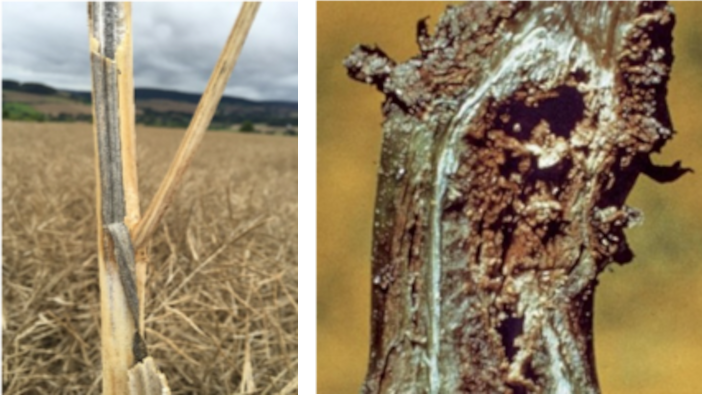A new characteristic in the Limagrain portfolio of hybrid oilseed rape varieties will reportedly offer UK growers a measurable and tangible level of stem-based disease resistance.
Stem Health comes on the back of the company’s hybrid breeding programme and covers the three primary stem-based diseases: phoma, light leaf spot and verticillium.
“To date, there has been no valuable way of assessing a variety’s tolerance to the three most common stem-based diseases in a quantifiable way – and this is what we have set out to do with the launch of ‘Stem Health’,” said Liam Wilkinson, arable technical officer for Limagrain.
“For a Limagrain variety to hold the Stem Health tag it has to offer high levels of disease resistance to all three diseases – one single weakness leads to exclusion from the Stem Health list, or the right to carry the Stem Health claim.”

He added that this characteristic brings another level of genetic security to help mitigate as much risk as possible.
“Stem health is generally an area that is often overlooked but can have a serious impact on the gross output. However by having healthy green stems longer into the growing season we often see higher yields and oil content,” he said.
“As breeders, we have recognised that the best way to mitigate the risk to on-farm performance from these diseases, is through improved genetics, therefore Stem Health has been a key focus for the Limagrain European breeding programme.”
Across three breeding stations in Europe and in collaboration with institutes and universities, Limagrain has been able to test and evaluate material across different disease pressures.
“We select plants with good strong stems that stand well – we know the genetics will hold up,” said Mr Wilkinson.
The first varieties to offer Stem Health are the newly recommended Attica and the currently available LG Auckland, offering gross outputs of 107% and 106% respectively.
The OSR market
In a recent industry briefing, Limagrain’s arable marketing manager William Charlton said that there was increased confidence in oilseed rape on the back of high commodity prices and a better understanding of crop establishment.
“Oilseed rape is still the best non-cereal break crop, and second to first wheats in many situations in terms of farm gross margins – and with newer varieties bringing improved yields, vigour and agronomic characteristics to the rotation – growers are seeing the opportunity provided by the crop,” he said.
“We saw a big rebound in the crop in 2021, with the planted area for harvest 2022 up around 361,000ha. This year, we expect that to go up to 414,000ha sown.”
“We also see the popularity of hybrids increasing, with hybrids making up 71% of the crop drilled this year, and only 19% of the crop is down to conventional varieties and 10% to farm-saved seed.”
“There is no doubt that the rise in popularity of hybrids is led by their vigour, as well as their ability, in the case of Limagrain hybrids, to offer Stem Protect, TuYV, Clubroot, Pod Shatter and RLM7 resistance – all of which contribute to yield stability, which we know is what growers are looking for on-farm,” he concluded.


